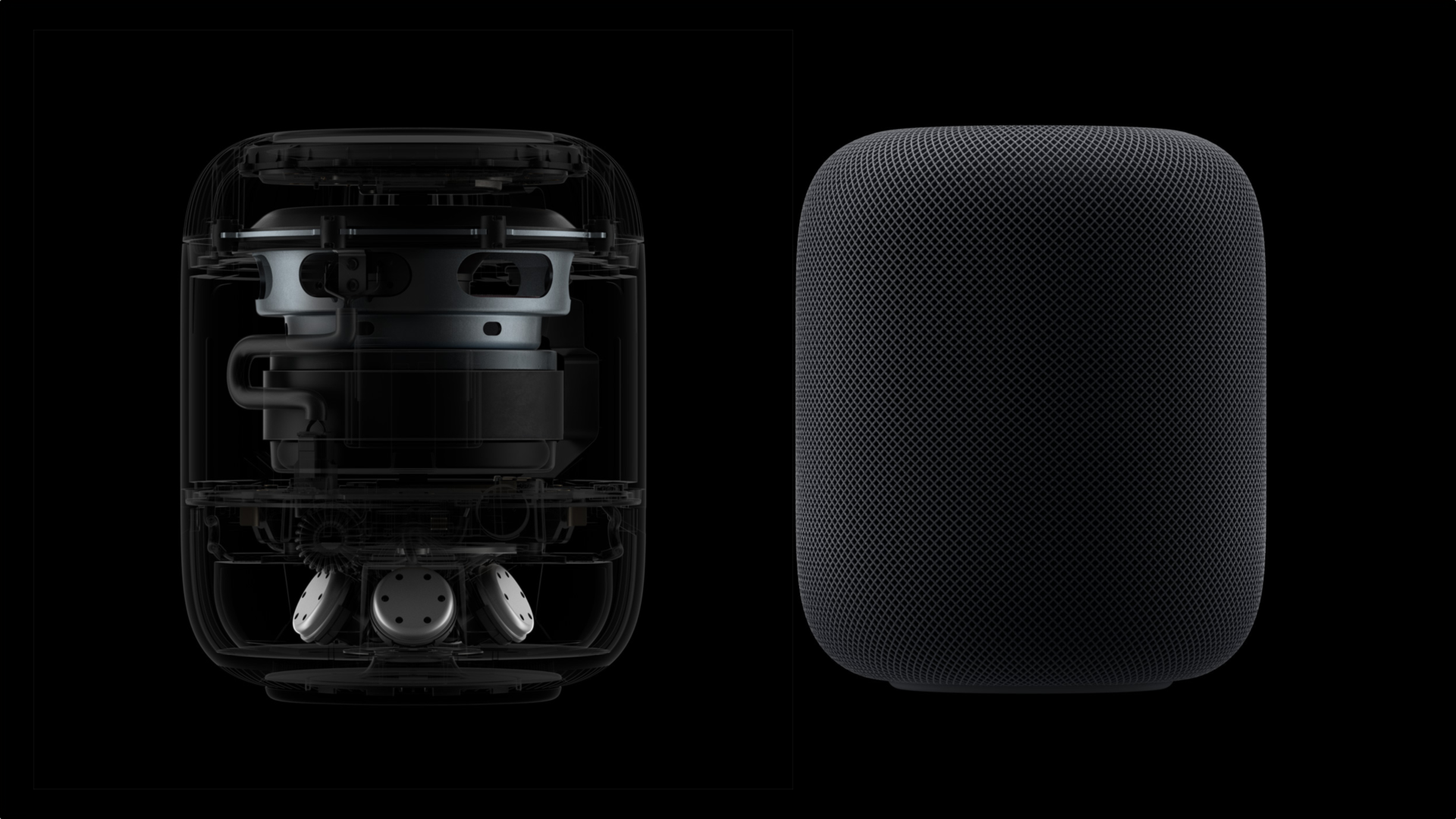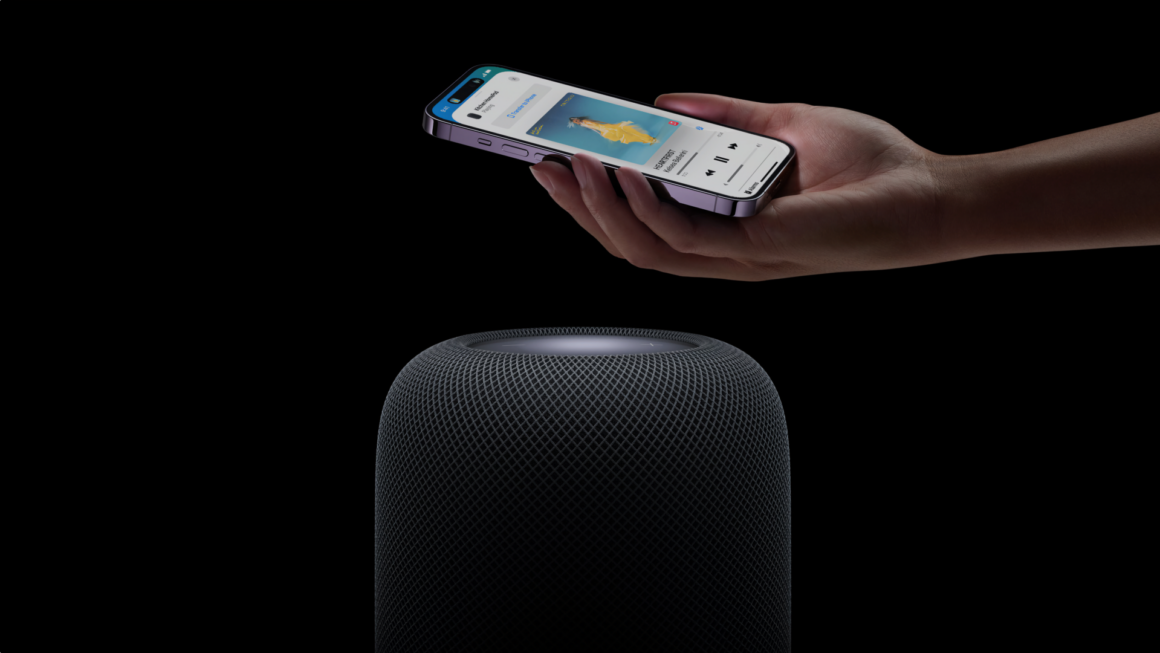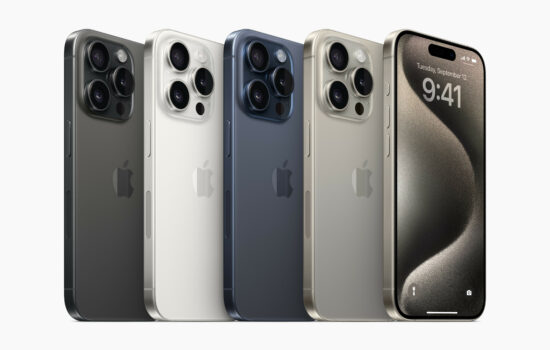In a surprising press release on Wednesday, Apple officially released a second generation of its HomePod speaker. After developing a cult-like following its discontinuation in 2021, the new second-generation HomePod features a similar design and brings new features with minor setbacks.
Design

While the second-generation HomePod is visually the same as the first-generation, the new model is slightly shorter and lighter than its predecessor.
The first-generation HomePod measures 6.8 inches tall, 5.6 inches wide, and weighs 5.5 pounds. The new second-generation model is 6.6 inches tall, 5.6 inches wide, and weighs 5.16 pounds.
The first-generation HomePod featured a glass display with an array of LEDs behind a diffuser that lit up whenever Siri was listening. The second-generation HomePod features the same size glass display, but the LED array is similar to the HomePod mini.
“With a seamless, acoustically transparent mesh fabric and a backlit touch surface that illuminates from edge to edge, the new HomePod boasts a beautiful design that complements any space,” says Apple.Â
Updated Apple Silicon
The second-generation HomePod is powered by an Apple S7 SiP, compared to the A8 chip found in the first-generation. The chip is a 64-bit processor that is borrowed from the Apple Watch Series 7 from 2021.
The S7 chip allows the second-generation HomePod to support “advanced computational audio with system sensing for real-time tuning that maximizes the full potential of its acoustic system for a groundbreaking listening experience,” says Apple.
Like the first-generation model, the second-generation HomePod with its S7 chip will still allow the speaker to sense the room and the environment to deliver the best possible sound.
Sound

It’s unclear how large the woofer was in the first-generation model, but the second-generation HomePod features a 4-inch high-excursion woofer powered by a motor that allows up to 20mm of travel. “A high”‘excursion woofer packs HomePod with deep, rich bass. Its powerful motor drives the diaphragm a remarkable 20 mm, while its bass”‘EQ mic dynamically tunes low frequencies in real time,” says Apple.
A big difference between the two generations of models is how many tweeters and microphones surround the speaker. The first-generation model featured a seven-array tweeter and six far-field beamforming microphones. The second-generation features a five-array tweeter and four beamforming microphones.
I would assume that Apple has figured out a way to getter better or similar sound while using fewer components, but that remains to be heard.
“HomePod has an array of five beamforming tweeters around its base. They optimize high frequencies to produce detailed, articulate audio with stunning clarity. So you can enjoy crystal-clear vocals and all the details of the instruments ”” just as if you were there in person,” said Apple.
Both models feature Bluetooth 5.0, Spatial Audio, Dolby Atmos and Apple Lossless support, but the second-generation takes it up a notch with support for sound recognition and Handoff support thanks to the U1 chip inside the S7 SiP.
Interesting Differences
There’s a couple of notable differences between the models that I wanted to dedicate an entire section to. One of these differences is the decision to downgrade the WiFi band support to 802.11n rather than 802.11ac from the first-generation model.
In simple terms, that means the first-generation HomePod support WiFi 5 while the second-generation model only supports WiFi 4. It’s unclear how this will affect any, if at all, functionality or speed.
Another notable difference between the two models is Thread and Matter support. The first-generation HomePod does not support Thread, a secure and open home automation standard backed by Apple, Google, and Amazon.
“HomePod works seamlessly with your HomeKit accessories. And as an essential building block for Matter ”” the new smart home connectivity standard ”” it’s now compatible with even more accessories,” says Apple’s website.
Lastly, one last difference is that you cannot combine two different generations of HomePod in a stereo pair. Apple says customers can pair two first-generation or two second-generation HomePods together, which means you cannot mix and match models. Apple’s website says “creating a HomePod stereo pair requires two of the same model HomePod speakers, such as two HomePod mini, two HomePod (2nd generation), or two HomePod (1st generation).”









Thank you. Interesting read. If you were going to buy one which would you go for?